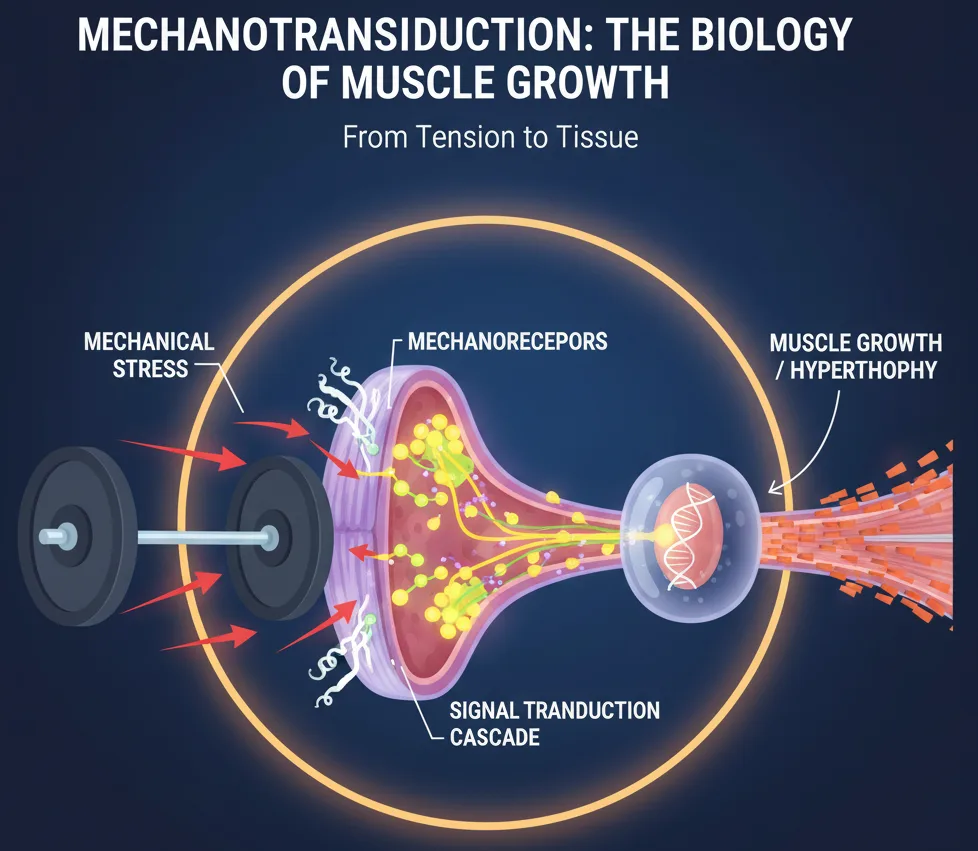In the quest for optimal muscle growth, fitness enthusiasts and athletes often debate the minutiae of training variables – from rep ranges to rest periods. However, a fundamental biological process, often overlooked, provides a powerful insight into what truly drives hypertrophy: mechanotransduction.
The core message, elucidated in recent discussions, highlights that once a muscle reaches a state of maximum tension or "failure," the specific tempo or speed of your repetitions becomes secondary. What truly matters is reaching that critical threshold where mechanotransduction kicks in, signaling the muscle to grow.
What is Mechanotransduction?
Imagine your muscle cells as tiny engineers, constantly monitoring their environment for signals. When you lift weights, especially as you push towards your limits, your muscle fibers experience significant mechanical stress. This stress isn't just physical strain; it's a potent biological signal.
Mechanotransduction is the sophisticated process by which your muscle cells detect and convert these mechanical stresses and forces into biochemical signals. Think of it as a microscopic communication system:
-
Mechanical Receptors: Specialized mechanical receptors located on the surface and within your muscle cells sense the stretching, tension, and compression.
-
Signal Transduction: These receptors then initiate a cascade of internal cellular events, effectively "translating" the mechanical force into a chemical message.
-
Protein Synthesis: This chemical message ultimately leads to an increase in protein synthesis – the building blocks of new muscle tissue.
In simpler terms, when your muscles are sufficiently challenged, these internal cellular mechanisms get activated, telling your body: "We need to adapt and get stronger/bigger!"
The Critical Role of Maximum Tension and Failure
The insights from the shared content emphasize that the muscle itself doesn't particularly care how you generate this mechanical stress. Whether you lift explosively or slowly, with a super-set or a straight set, the primary driver for mechanotransduction is reaching a state of maximum tension or muscle failure.
As the Persian text explains: "With any tempo you reach the point where Mechanotransduction occurs, the muscle no longer distinguishes what you are doing. It says: I only need to reach maximum tension for Mechanotransduction to happen and cause protein synthesis so I can grow."
This suggests that once your muscle is under enough strain to trigger these mechanosensitive pathways, the specific pace of the movement becomes less relevant. The body's biological imperative takes over, responding to the absolute demand placed upon it.
Implications for Your Training
This understanding of mechanotransduction offers practical takeaways for anyone looking to optimize their muscle growth:
-
Focus on Intensity, Not Just Tempo: While tempo can play a role in time under tension and exercise execution, the primary goal should always be to challenge the muscle to a sufficient degree – often meaning pushing towards failure or near-failure.
-
Variety Can Still Be Effective: This concept doesn't negate the benefits of varying tempos or training styles. Rather, it reassures us that different approaches can all lead to muscle growth, provided they effectively generate the necessary mechanical tension. Whether you do slow eccentrics or faster concentric movements, ensure the overall set pushes your muscles to their limit.
-
The "Why" Behind "Failure": It explains why training to failure (or close to it) is a highly effective strategy for hypertrophy. It's not just about fatiguing the muscle; it's about signaling to the cellular machinery that adaptation is required.
In conclusion, while many training variables contribute to a well-rounded program, the fundamental principle of mechanotransduction underscores the paramount importance of generating significant mechanical tension within the muscle. Push your muscles to their limits, and their internal biological mechanisms will respond by building the strength and size you're aiming for.

